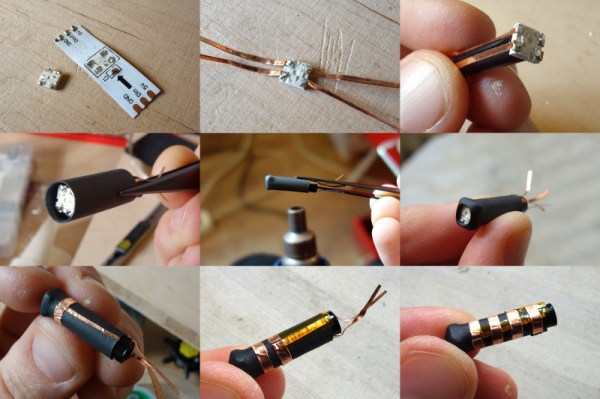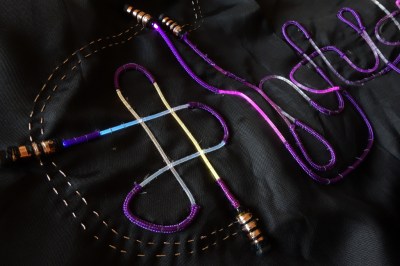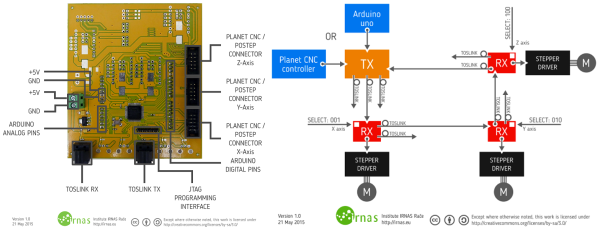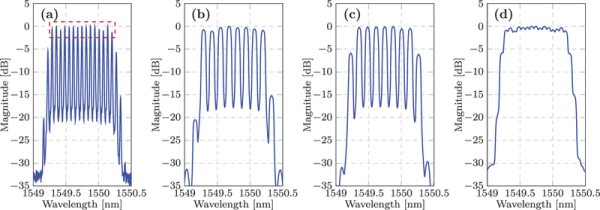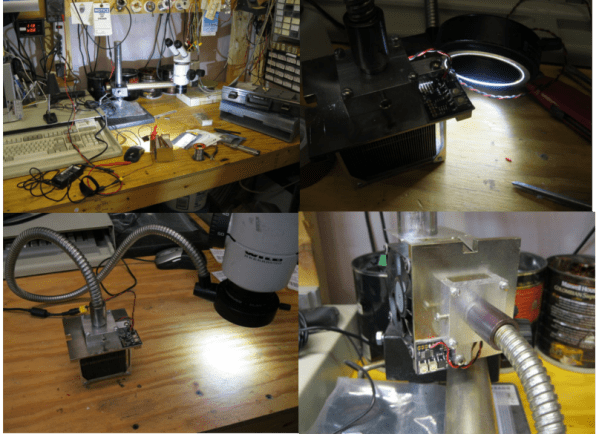Fiber optics are a great way to transfer huge quantity of data at lightning speed. Thanks to the property of total internal reflection, which allows light to flow through a glass fiber like fluid through a pipe, they can be used for communications at long distances and form the backbone of modern communication networks. However, water is also able to pull off the total internal reflection party trick, and [Mike Kohn] decided to see if it could be used as a communication medium, too.
The experimental setup consists of an ATTiny85 that receives signals over its serial port, and outputs the received bits by flashing an LED. This LED is attached to a plastic tube filled with water. On the receiving end, another ATTiny85 reads the voltage level of a photodiode placed in the other end of the tube. When the ADC detects voltage over a certain level, it toggles a pin connected to the serial RX pin.
Hooking the setup to a pair of terminals, [Mike] was able to successfully transmit 9600 baud serial data through a tube full of water with just an LED and a small microcontroller. To verify the success, he ran the test again with an air-filled tube instead, which failed. In doing so, he proved that the water was doing the work.
We’ve seen other optical data hacks, too – like this awesome laser ethernet build. Video after the break.

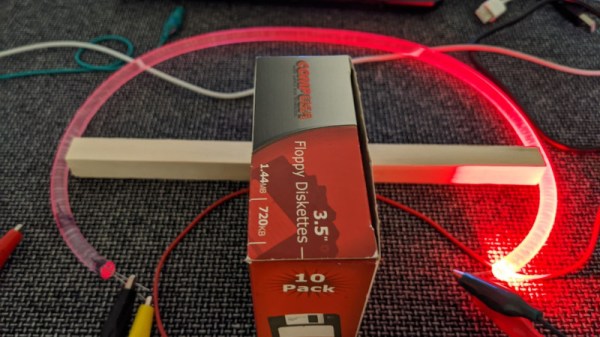
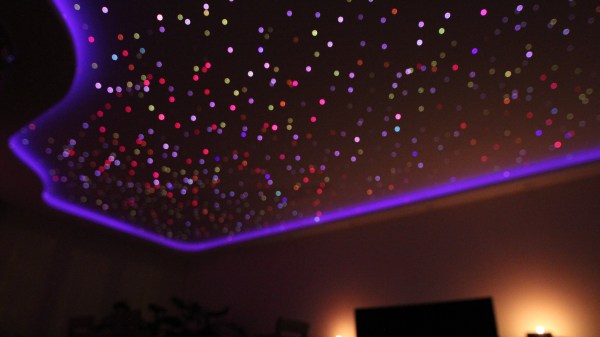

 The wings are a leathercraft project, consisting of a harness worn around the torso. This serves as the mounting point for the fiber optics, as well as the RGB Critter flashlight used to drive the lightshow. Leather parts are lasercut to the right shape, making it easy to create the delicate feather shapes in the design. The pieces are then dyed appropriately and sewn together into the final shape. Bundles of optical fibers are then wound through the harness, sprouting from either shoulder of the wearer. EVA foam is used to help create the right shape for the wings, allowing the different layers to remain separated to create more visual depth.
The wings are a leathercraft project, consisting of a harness worn around the torso. This serves as the mounting point for the fiber optics, as well as the RGB Critter flashlight used to drive the lightshow. Leather parts are lasercut to the right shape, making it easy to create the delicate feather shapes in the design. The pieces are then dyed appropriately and sewn together into the final shape. Bundles of optical fibers are then wound through the harness, sprouting from either shoulder of the wearer. EVA foam is used to help create the right shape for the wings, allowing the different layers to remain separated to create more visual depth.